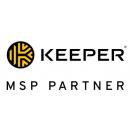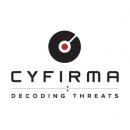fortify your cybersecurity with crowdstrike
Advanced Threat Detection and Response Solutions

⇒ What is CrowdStrike Endpoint Detection and Response (EDR)?
A cybersecurity solution called endpoint detection and response (EDR) records all endpoint activity and uses advanced analytics to give real-time visibility into the state of all endpoints, identify unusual activity, notify the information security (Infosec) team of events, and offer remediation recommendations and the ability to respond to, halt, or restrict the spread of an attack.
Endpoint detection and response solutions have the following capabilities:
- Endpoint monitoring and event recording
- Data search, investigation and threat hunting
- Alert triage or suspicious activity validation
- Suspicious activity detection
- Data analysis
- Actionable intelligence to support response
- Remediation


⇒ What is Extended Detection and Response (XDR)
By streamlining security data intake, analysis, and procedures throughout an organization's whole security stack, extended detection and response, or XDR, improves visibility into sophisticated and hidden security threats.
An XDR platform gathers and correlates data from various infrastructure components in order to expedite security operations, lower risk, and enhance threat visibility throughout the company. This data is analysed, prioritised, and streamlined by XDR so that it can be sent to security teams via a single, unified console in a standard format.
XDR platforms typically offer the following capabilities:
- Diverse, multi-domain security telemetry
- Threat-focused event analysis
- Threat detection and prioritization of data fidelity
- Data search, investigation and threat hunting across multi-domain telemetry
- Response to mitigate and remediate the threat

⇒ What is Managed Detection and Response (MDR)?
Managed security "as a service" is what's known as managed detection and response, or MDR. This service, which includes EDR, oversees endpoint security technology for enterprises. Typical service capabilities consist of:
- Continuous monitoring
- Threat hunting
- Prioritization of threats and alerts
- Managed investigation services
- Guided Response
- Managed remediation
The primary advantage of MDR is its ability to quickly detect and mitigate hazards without the need for more personnel. This is especially crucial in light of the global scarcity of highly qualified cybersecurity experts and the ensuing skills gap, especially when it comes to safeguarding cloud-based assets and systems.

⇒ EDR vs. XDR vs. MDR
- EDR serves as the cornerstone of every cybersecurity strategy by providing endpoints with baseline monitoring and threat detection capabilities. This system uses sensors or software agents that are deployed on endpoints to collect data and transmit it to a central repository for examination.
- XDR expands the scope of EDR protection beyond endpoints. In order to improve visibility into hidden and advanced threats and to unify the response, the XDR solution "extends" beyond the infrastructure, facilitating security data input, analysis, and workflows across an organization's whole security stack. XDR offers access to knowledgeable specialists in threat hunting, threat intelligence, and analytics when acquired as a managed service.
- MDR in essence is EDR that is acquired as a service. With a committed, knowledgeable security staff, this service oversees endpoint security and focuses on reducing, removing, and remediating attacks.

⇒ Advanced Vision IT Ltd Cybersecurity Products & Software
To build good cybersecurity protection, you need physical products and software that will help strengthen your network against attacks. If you want to view some of the ADVANCED VISION IT's cyber protection solutions, click on the links below.
- Endpoint security and antivirus software - offer a centralized management system from which security administrators can monitor, protect, and investigate vulnerabilities across all endpoints, including computers, mobile devices, servers, and connected devices. Antivirus software helps keep a computer system healthy and free of viruses and other types of malware.
- Employee Monitoring Solution - Employee monitoring solutions are software tools that enable employers to monitor the activities of their employees while they are at work. These solutions can be used to track employees' computer usage, including their internet browsing history, email communication, keystrokes, and application usage.
- Cybersecurity Backup - A backup is a copy of the system or network's data for file restoration or archival purposes. Backups are an essential part of a continuity of operations plan as they allow for data protection and recovery.
- Еmail Protection - refers to technology designed to prevent, detect and respond to cyber-attacks delivered through email. The term covers everything from gateways email systems to user behavior to related support services and security tools.
- Password Vault Manager - A password vault, password manager, or password locker is a program that stores usernames and passwords for multiple applications securely and in an encrypted format. Users can access the vault via a single “master” password.
- Vulnerability Assessment & Patch Management - The main difference between patch management and vulnerability management is that patch management is the operational process of applying remediations (patches) to vulnerable systems. Vulnerability management is the process of identifying, scanning, and prioritizing vulnerabilities for remediation.
- Data loss prevention (DLP) - makes sure that users do not send sensitive or critical information outside the corporate network.
- Cloud Security - Cloud security is a collection of security measures designed to protect cloud-based infrastructure, applications, and data. These measures ensure user and device authentication, data and resource access control, and data privacy protection.
- Next-Generation Firewall - protects your network by filtering traffic and acting as a guard between your internal network and the rest of the world. Without a Firewall, your business systems could be left wide open and vulnerable to attack. It also serves as another protective layer to block malicious software.
- Active Directory Security and Recovery are critical components of any organization's cybersecurity strategy. Here are some key steps that can be taken to secure and recover Active Directory.
- SIEM & SOAR - SIEM (Security Information and Event Management) and SOAR (Security Orchestration, Automation, and Response) are both tools used in cybersecurity to monitor and respond to security threats.
CONTACT OUR TEAM OF PROFESSIONALS FOR A COMPLETELY FREE CONSULTATION
CLAIM YOUR FREE IT AUDIT & CONSULTATION SCHEDULE A CALL WITH OUR TEAM

























